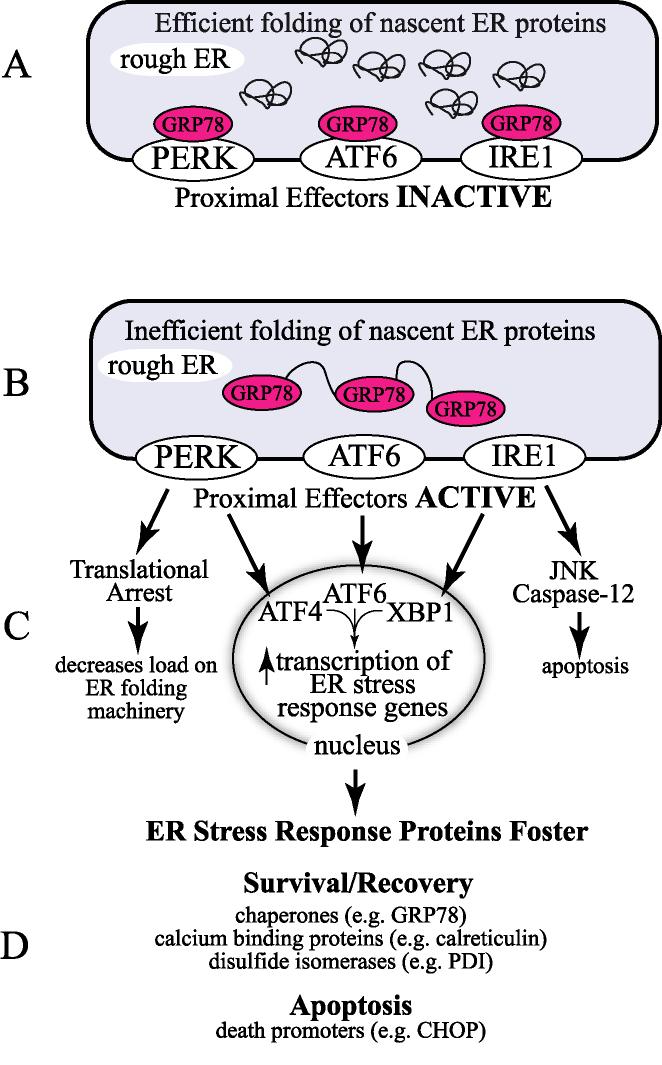Figure 1.
The Unfolded Protein Response:
Panel A- Under non-stressed conditions, proteins that are synthesized in the rough ER are efficiently folded. The ER-resident molecular chaperone, glucose-regulated protein-78 (GRP78), is associated with the luminal domains of the 3 proximal effectors of the unfolded protein response (UPR), PKR-like ER kinase (PERK), inositol-required enzyme-1 (IRE-1) and activating transcription factor 6 (ATF6). Under these conditions, these 3 UPR effectors are inactive in terms of activating downstream effects of the UPR.
Panel B- Stresses that perturb the redox status of the ER lumen, alter ER calcium levels, or disrupt the ER protein glycostylation machinery, result in the accumulation of mis-folded, dysfunctional proteins in the ER lumen, which initiates ER stress. Upon ER stress, GRP78 translocates from the luminal domains of PERK, ATF6 and IRE-1 to the misfolded proteins in the ER lumen in an effort to assist in folding. Under these conditions, PERK, ATF6 and IRE-1 and ATF6 are activated.
Panel C- The PERK, ATF6 and IRE-1 branches of the UPR each mediate the transcriptional induction of ER stress response genes via the transcription factors, ATF4, ATF6 and XBP1, respectively. In addition, PERK can mediate global translational arrest by phosphorylation eIf2α, and IRE-1 can mediate the activation of JNK and caspase-12. Translational arrest decreases the workload on the ER, allowing time for recovery; however, the mRNAs encoded by many ER stress response genes have evolved structural features that allow them to escape this translational arrest, which is important for the up-regulation of ER stress response proteins upon acute stress. The JNK and caspase-12 branches of the UPR contribute to programmed cell death that takes place upon chronic ER stress. Many ER stress response genes encode ER-targeted chaperones, and other ER proteins that are designed to stabilize and/or re-establish an ER luminal environment that is suitable for nascent ER protein folding, facilitating cell survival and recovery from acute ER stress (Survival/Recovery). However, if the stress is not resolved, ER stress response genes induced upon chronic stress lead to apoptotic cell death (Apoptosis).

